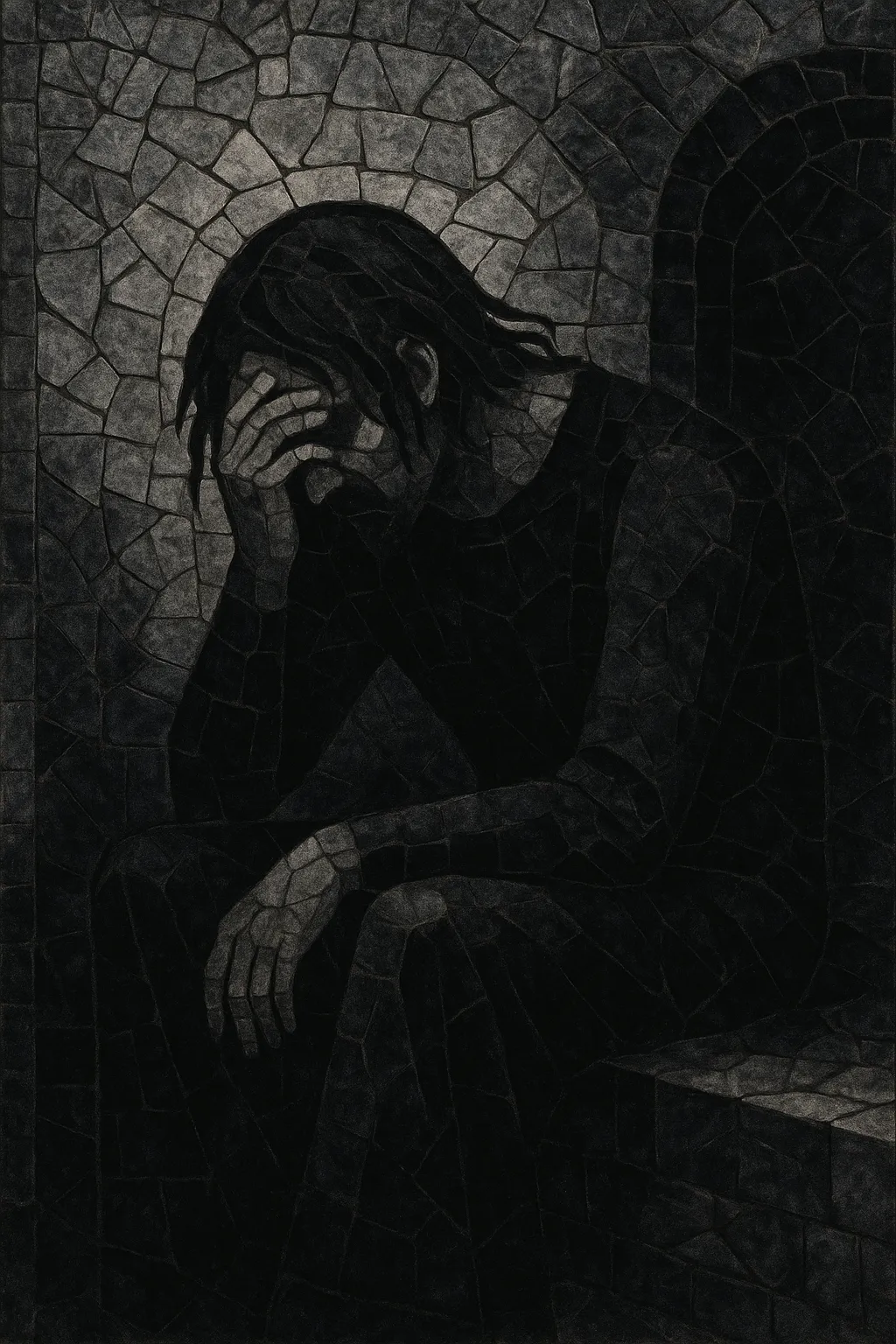Depressive black metal (often abbreviated DSBM) is a bleak, slow- to mid‑tempo branch of black metal that foregrounds introspective melancholy, nihilism, and themes of isolation, self‑destruction, and mental anguish.
Musically it blends raw, lo‑fi black metal timbres—tremolo‑picked minor‑key riffs, thin and reverb‑soaked guitars, and frigid drum patterns—with the weight and space of doom metal and the ambience of dark ambient. Vocals are typically anguished, high‑pitched wails, desperate shrieks, or murmured/whispered confessions rather than triumphal grimness. Clean guitar interludes, sparse piano, synth pads, and repetitive hypnotic motifs are common, creating a numbed, dirge‑like atmosphere.
Compared with traditional second‑wave black metal, DSBM is less aggressive and more inward‑facing, favoring minimalist, slowly evolving arrangements and mournful melody over speed or technical display.
The seeds of depressive black metal were planted in the mid‑to‑late 1990s as certain black metal artists emphasized despair and introspection over satanic shock or pagan ferocity. Early touchstones include Bethlehem (Germany), whose bleak, suicidal lyricism and desolate atmospheres pointed away from second‑wave orthodoxy, as well as Norway’s Strid and Sweden’s Silencer, which modeled the stark minimalism, tortured vocals, and slow pacing that would become genre hallmarks.
By the early 2000s, the style coalesced through key releases by Swedish acts Shining and Hypothermia, American solo projects like Xasthur and Leviathan, and European projects such as Nocturnal Depression, Forgotten Tomb, and ColdWorld. Production aesthetics tended toward intentionally raw or claustrophobic mixes, emphasizing emotional impact over fidelity. Labels and niche forums/blogs facilitated a global tape/CD‑R exchange network, making the one‑person DSBM project a common model.
As the style spread, regional scenes (France, Germany, Italy, the U.S., Australia, Eastern Europe) developed distinct flavors—some folding in post‑punk/gothic elements (e.g., Lifelover), others leaning further into ambient/keyboard textures or funeral‑doom pacing. This period also saw overlap with emerging blackgaze and atmospheric movements, which borrowed DSBM’s emotive harmonies and introspective mood while softening the lo‑fi edge.
Streaming platforms and Bandcamp expanded DSBM’s reach, sustaining a prolific ecosystem of solo artists and small labels. While still underground, the genre’s aesthetics—repetitive melancholic riffing, anguished vocal delivery, and stark visual design—are now instantly recognizable. Ongoing discussions within the scene emphasize responsible handling of themes of self‑harm and mental illness, with many artists adding content advisories or reflective framing.
Use two distorted guitars (one carrying tremolo‑picked melodies, one droning or arpeggiating), bass doubling roots in low register, and drums that shift between slow/mid‑tempo beats and sparse, restrained blasts. Augment with clean guitar, sparse piano, or synth pads for bleak ambience.
Favor natural minor and harmonic minor, with modal color from Phrygian and Aeolian. Lean on stepwise, sighing motifs and upper‑neighbor tones; avoid bright leading‑tone resolutions. Octave doubling and parallel fifths reinforce a cold, monolithic feel.
Typical BPM ranges from 60–120. Alternate hypnotic, slow dirges with occasional restrained blast passages to release tension. Repetition is essential: build long arcs from subtle rhythmic and dynamic shifts rather than frequent section changes.
Deliver anguished, high‑registered screams, cracked wails, or whispered/half‑spoken laments with heavy reverb. Lyrics address depression, alienation, and existential dread; write in first‑person, image‑rich language, avoiding glamorization and treating sensitive topics responsibly.
Keep mixes narrow and dry in the mids with long reverbs on vocals and leads. Embrace lo‑fi textures: light tape saturation, modest hiss, and restrained drum programming can work. Layer clean interludes (clean guitar or piano) between heavier sections to deepen contrast.


